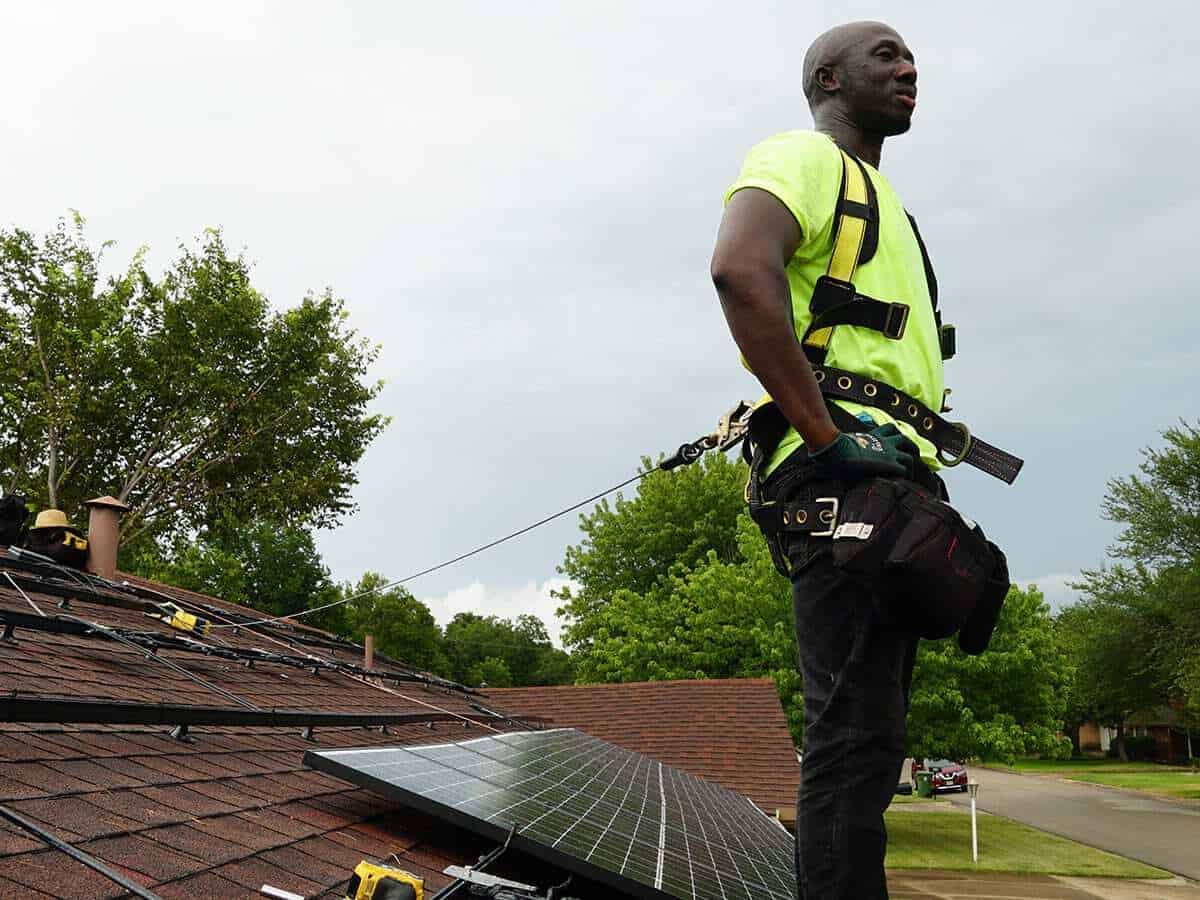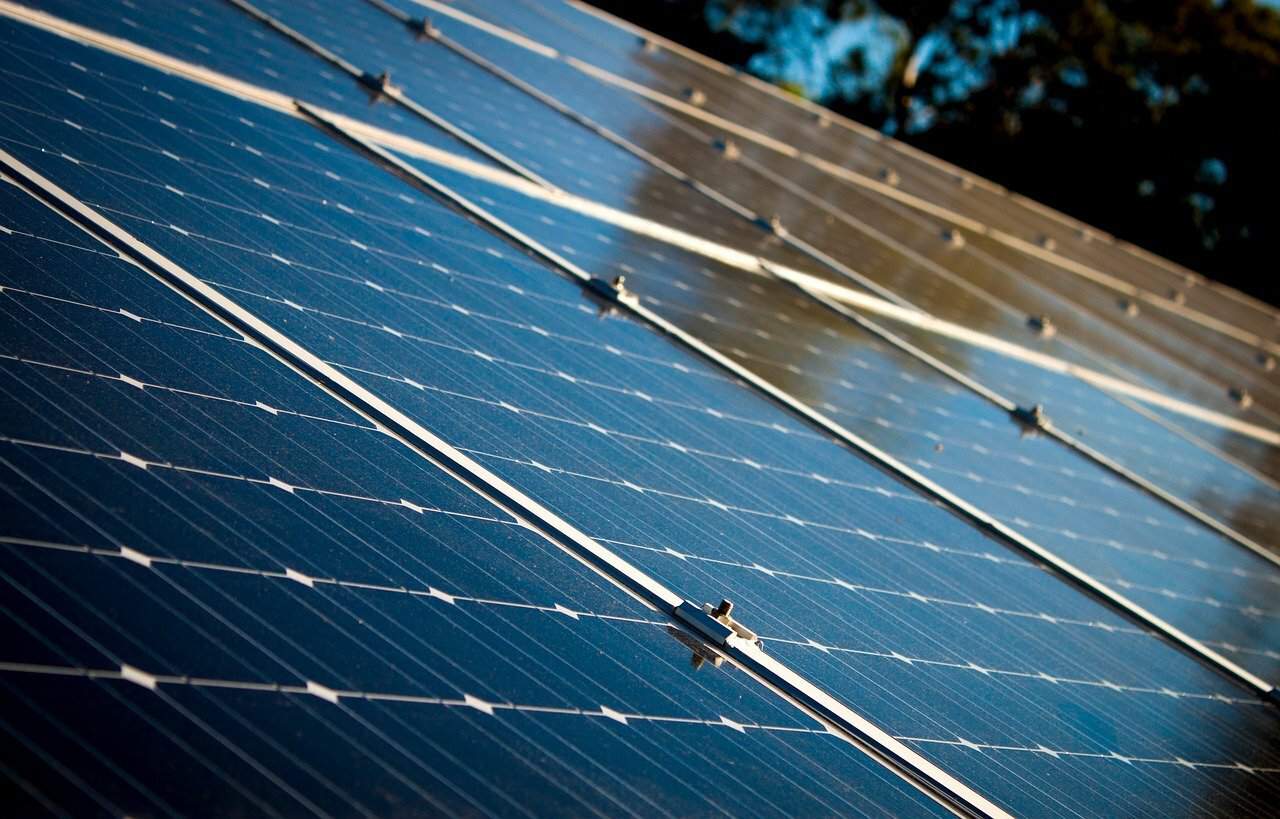Do you want to build your home somewhere off the beaten path? Maybe you like the idea of sustainable energy. Either way, you can stop using the public power grid if you learn how to build an off grid solar system.
Start here with our beginner’s guide to get a basic understanding of the process.
Discover Energy Audits with Solar Energy and ONIT Home
Try our Free Energy Audit to make sure your home is performing at optimum energy efficiency. We’ll inspect every nook and cranny of your home to make sure it’s best serving your needs. We’ll also give you tips on lowering your energy bills, conserving energy, and creating a more efficient space. To learn more about how we can help you maintain a top performing home, visit us online to get started!
FAQ: What Is an Off Grid Solar System?
An off grid solar system generates direct current (DC) power through solar panels that collect sunlight. Then an inverter converts the DC energy into alternating current (AC) electricity. There are also batteries to store energy.
The solar panels provide power during daylight hours, and when the sun goes down, the batteries supply electricity.
Does location or time of year impact the amount of solar energy produced?
Yes. Not only weather patterns but location and climate affect solar energy. According to the U.S. Energy Information Administration, solar energy varies by time of day. It’s most substantial when the sun is at its highest position, at noon on cloudless days.
Clouds, dust, pollution, buildings, trees, and mountains are considerations as you learn how to build an off grid solar system. Additionally, the type of solar panel determines how much energy the system produces.
Where is the Best Place to Put Solar Panels?
Solar panels work best on the house’s roof. However, there are a few things to think about, including which direction your home faces. Also, is there enough space?
Similarly, you can install the panels on the ground with mounting supports. Not only that, but it’s possible to install solar panels on an RV or boat with an off-grid configuration. Another influence is geographic location. In other words, your physical location determines the optimal direction to face solar panels. However, they should always face the direction in which they’ll receive direct light throughout the day.
The tilt angle is also important to maximize the panel’s radiation exposure and produce the most energy. Ideally, solar panels should be perpendicular to the sun to produce the most electricity. Note too that the sun is higher in the sky during the summer and lower in winter. Consequently, the optimum solar panel tilt changes from season to season.
The Benefits and Drawbacks of an off Grid Solar System
One benefit of an off grid solar system is no more monthly electricity bills. You could even qualify for a federal solar tax credit. And solar panels will increase your home’s value.
Another benefit is access to power during a rolling blackout. But perhaps one of the biggest reasons people choose to go off grid is a conscious effort to use renewable energy and for its sustainability.
Like everything, there are also drawbacks to building an off grid solar system. For one, off grid solar power is more expensive than being on the public grid, especially at first. You may also need a backup generator if the weather causes issues or another system failure happens.
There’s limited energy storage, and when you live off-grid, you must always be energy conscious.
How to Build an off Grid Solar System: Materials
The first thing you need to learn how to build an off grid solar system is a list of materials. Take the time to understand each of the components. It’ll go a long way as you put it all together.
The core list includes:
- Solar panels
- Inverter
- Battery storage system
- Solar charge regulator
- DC disconnect switch
- Backup generator
Of course, there’s a host of tools you’ll need as well, including cable cutters, allen keys, a cordless drill, pliers, a ladder, and personal safety equipment. You can work on building your tool kit as you gather the core pieces. Since solar panels are the main event, let’s explore those first.

Solar Panels: Monocrystalline vs. Polycrystalline
The technical name is a photovoltaic solar panel. A photovoltaic cell, or solar cell, absorbs sunlight and transforms it into DC electricity. You’ll notice that a solar panel has several photovoltaic cells.
There are two main types of solar panels, Monocrystalline vs. Polycrystalline. While they look similar, the difference is Monocrystalline panels use a single silicon crystal, and Polycrystalline panels use crushed silicon crystals.
Typically, Monocrystalline panels are the higher-end solar panel between the two. They’re the most efficient because of the wafer like monocrystalline panels that allow electrons to move more freely. On the other hand, Polycrystalline panels are less expensive.
Truthfully, the look of each influences consumers as well. Monocrystalline panels have a black hue and futuristic look. But some people prefer the blue shade of the Polycrystalline panels.
Off Grid Inverter
You’ll need an off grid inverter to power appliances. It’s the foundation of the solar system. The device converts the DC electricity coming from the solar panels or battery supply into AC electricity.
There’s an input and an output. The input requires a wired connection. The output side connects to the main panel, where the appliances connect to electricity.
Battery Storage System
Solar batteries enable storage of excess energy, so you can use it later. Typically, you set these batteries up to provide power to a specific part of your home. You can also install a smart electrical panel that allows you to customize controls.
Either way, you can stack multiple batteries and expand your storage capacity. If you want to learn how to build an off grid solar system to become self-sufficient, learn about solar batteries. You’ll need an energy source on cloudy days and during inclement weather.
Solar Charge Regulator
You’ll also need to install a solar charge regulator to protect your off grid solar system and get the most battery life. A solar charge regulator controls the voltage and current when the batteries charge. Basically, it keeps them from overheating.
A solar charge regulator protects the system from damage caused by too much power surging from the solar energy source.
DC Disconnect Switch
Install DC disconnect switches between solar panels, batteries, and charge controllers to stop the current. A DC disconnect switch is valuable during maintenance and repair and when you want to upgrade the system.
It will stop the inverter from producing DC power while AC energy flows, distributing power to a service panel.

Backup Generator
Longs periods of cloudy weather and other environmental factors can mean that your off-grid solar system can’t produce electricity. That’s why a backup generator is essential. The generator will supply power to operate electrical loads until the system can collect and transform energy.
A backup generator can even charge batteries if needed.
Steps in Designing Off-Grid Solar Systems
The first step in designing an off grid solar system is calculating how much power you need. First, make a list of devices and how much power they use in Watts. Check the device’s nameplate to find out. Next, determine your power consumption. How long do you use each device daily?
To calculate your power consumption in Watt-hours, multiply the devices Watt-hours by your daily use. Knowing how much energy you need will help you buy the right size batteries.
Now you must:
- Determine sun hours
- Pick the location for the panels
- Determine available space
- Decide which solar panels will be best
- Pick your batteries
- Select the charge controller
- Choose the mounting structure
The most common mounting structures are for sloped or flat roofs, ground mounted systems, and a ballasted type.
Steps: How to Build an Off Grid Solar System
Once you understand the parts and complete your design, you’re ready to build!
- First, install the mounting structure.
- Next, you’ll need to install the solar panels onto the mounting system and interconnect the panels according to your design.
- Lay down cables and a containment system. This includes cable trays, trunks, or conduits.
- Crimp the ends of the wires and add the MC4 connectors. Pro tip: use red cables for a positive output and black wires for a negative output to avoid any confusion. Be sure to tag each cable end.
- Connect the inverters output to an allocated breaker on the electrical panel. This way, you can convert the AC electricity.
- After this is installed, it’s time for you to test the system.
- Ensure that the values for voltage, current, and power are what you expected. If you run into any issues, do not operate the system until you’ve found the fix.
Here are some important tips to consider! Remember that since the DC cables connect the solar panels and batteries, you’ll want to install them in a secure spot. Make sure that you’re installing the AC and DC breakers properly for safety reasons. For the batteries, you’ll want to ensure that they are in a secure and dry place. Use the same length of the positive and negative cables to avoid any unbalanced current flow.

DIY or Work With Professionals?
If DIY isn’t your style, ONIT Home is here for you! We help homeowners with professional installation of solar panels for your household. No matter what size of a project itis, we’re ONIT. Visit us online or give us a call at 1-833-433-0331 to get started today.
With ONIT, if you buy a water system, we’ll give you a $2,000 security system for only $1,000. That way, you can protect your family from contaminated water and protect them with a safe home. Additionally, we’re offering a free security and water system for free with the purchase of a solar system. Our customers receive $1500 in vouchers with security, water, and solar. Take advantage of this great offer today by calling us at 1-833-433-0331.



